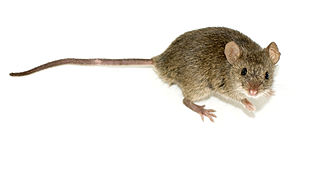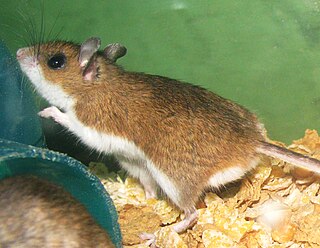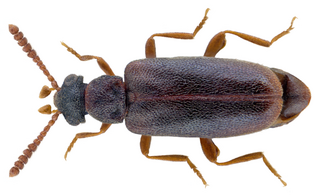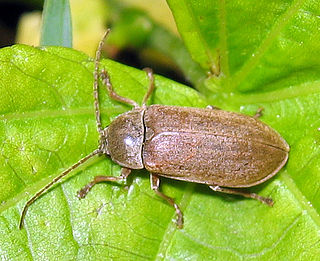
The blue whale is a marine mammal belonging to the baleen whale suborder Mysticeti. Reaching a maximum confirmed length of 29.9 meters and weight of 173 tonnes, it is the largest animal known to have ever existed. The blue whale’s long and slender body can be various shades of grayish-blue dorsally and somewhat lighter underneath.

Balaenoptera, from Latin: balaena ('whale') and Ancient Greek: pteron ('fin'), is a genus of Balaenopteridae, the rorquals, and contains eight extant species. The species Balaenoptera omurai was published in 2003. Balaenoptera is a diverse genus and comprises all but one of the extant species in its family—the other species is the humpback whale.

The house mouse is a small mammal of the order Rodentia, characteristically having a pointed snout, large rounded ears, and a long and hairy tail. It is one of the most abundant species of the genus Mus. Although a wild animal, the house mouse has benefited significantly from associating with human habitation to the point that truly wild populations are significantly less common than the semi-tame populations near human activity.

Peromyscus is a genus of rodents. They are commonly referred to as deer mice, not to be confused with the chevrotain or "mouse deer." They are New World mice only distantly related to the common house and laboratory mouse, Mus musculus. From this relative, Peromyscus species are distinguished by relatively larger eyes, and also often two-tone coloring, with darker colors over the dorsum (back), and white abdominal and limb hair-coloring. In reference to the coloring, the word Peromyscus comes from Greek words meaning "booted mouse". They are also accomplished jumpers and runners by comparison to house mice, and their common name of "deer mouse" is in reference to this agility.
HomoloGene, a tool of the United States National Center for Biotechnology Information (NCBI), is a system for automated detection of homologs among the annotated genes of several completely sequenced eukaryotic genomes.

The genus Mus or typical mice refers to a specific genus of muroid rodents, all typically called mice. However, the term mouse can also be applied to species outside of this genus.
Baiomys is the genus of New World pygmy mice. Together with Scotinomys, it forms the tribe Baiomyini. It currently contains two extant species:
The southern pygmy mouse is a species of rodent in the family Cricetidae. It is found in El Salvador, Guatemala, Honduras, Mexico, and Nicaragua.
Xenochodaeus ulkei is a species of sand-loving scarab beetle in the family Ochodaeidae. It is found in North America.
Xenochodaeus simplex is a species of sand-loving scarab beetle in the family Ochodaeidae. It is found in North America.
Lixus musculus is a species of true weevil in the beetle family Curculionidae. It is found in North America.
Xenochodaeus planifrons is a species of sand-loving scarab beetle in the family Ochodaeidae. It is found in North America.
Meibomeus musculus is a species of leaf beetle in the family Chrysomelidae. It is found in North America.
Meibomeus is a genus of pea and bean weevils in the beetle family Chrysomelidae. There are about 12 described species in Meibomeus.
Vanonus musculus is a species of ant-like leaf beetle in the family Aderidae. It is found in North America.

Vanonus is a genus of ant-like leaf beetles in the family Aderidae. There are about 16 described species in Vanonus.
Xenochodaeus luscinus is a species of sand-loving scarab beetle in the family Ochodaeidae. It is found in North America.
Anthocoris musculus is a species of minute pirate bug in the family Anthocoridae. It is found in Europe & Northern Asia and North America.

Dascillus is a genus of soft-bodied plant beetles in the family Dascillidae. There are more than 20 described species in Dascillus.
Xenochodaeus americanus is a species of sand-loving scarab beetle in the family Ochodaeidae. It is found in North America.






